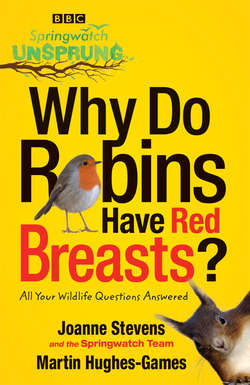Читать книгу Springwatch Unsprung: Why Do Robins Have Red Breasts? - Jo Stevens - Страница 18
Purrfect
ОглавлениеDo wildcats sound the same as domestic cats? Do they purr? Avril
As most cat owners know, domestic cats communicate with a variety of calls and vocalisations including hisses, growls, chatters, as well as the more familiar purring and meowing. Hissing and growling are clear signs that a cat is feeling threatened or angry. A female will ‘caterwaul’ when she is fertile – a bloodcurdling wail that advertises to local males that she is ready to mate. Kittens meow to their mothers to request food or attention and an adult pet cat continues this behaviour with its human owner. Those plaintive cries asking to be fed, let inside from the rain or demanding to be stroked are hard to ignore! Whatever delusions of grandeur your moggy may have, only a few large cats such as lions, tigers and leopards can roar.
It’s very difficult to determine exactly when cats became domesticated because the skeletons of domestic cats and their wild predecessors are so similar. However, the skeleton of a domestic cat was found with its owner at an archeological site in Cyprus, having been buried about 9,500 years ago, so domestication must have occurred before then. Genetic studies suggest that cats began living with humans when agriculture blossomed in the Fertile Crescent of the Middle East around 12,000 years ago. Wildcats were probably attracted by the rodent pests that were drawn to our ancestors’ grain stores and stayed to take advantage of this food source. No doubt, humans would have welcomed these cats if they helped to keep pests at bay. The origins of our pet cats are a bit murky but biologists suspect that their ancestors include the African and European wildcats, both subspecies of Felis sylvestris that might have interbred in the Middle East region.
Wildcats are found across Europe but in the UK they are restricted to Scotland where they are considered to be a unique subspecies, Felis silvestris grampia. They are superficially quite similar to our domestic cats and can interbreed with them, but their behaviour is quite different to that of a pet tabby that will sit on your knee. They are truly wild creatures and very elusive in their natural habitat.
Scottish wildcats lead a solitary life most of the time so, although they can make the same vocalisations as domestic cats, they generally remain silent. Instead they communicate by scent, marking their territories with faeces, urine or their scent glands. They only become vocal when they meet another cat during the breeding season or when they have kittens.
Most species of cat, large and small, can purr. Exactly how cats produce the purring sound is not yet understood entirely, but it is thought that the glottis (the area of the larynx with the vocal cords) is rapidly expanded and contracted as the cat breathes in and out, creating the characteristic vibration sounds. (We contract our glottis to create an ‘h’ sound in speech.) Unlike domestic cats, adult wildcats do not purr. Kittens purr from birth, especially when they are suckling, and purring is often interpreted to mean that the cat is content or happy. However, adult domestic cats sometimes purr during stressful situations or when they are in pain, perhaps as a means to comfort themselves or encourage others to provide care. Cats have learned that purring is a virtuous cycle – by showing pleasure they receive more pleasure, whether they are manipulating their mother or a cat-loving human.
